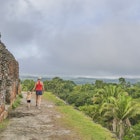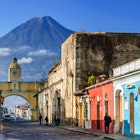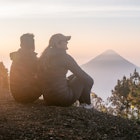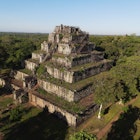Turquoise waters, seaside hideouts, thick jungles where the elusive jaguar resides, it's no wonder Belize bills itself as the perfect “Caribbean” getaway. But to truly appreciate what this Central American country has to offer, listen to the Garifuna drums, indulge in Mayan chocolate and immerse yourself in the culture these two groups bring to the country – that is where the real Belize lies.
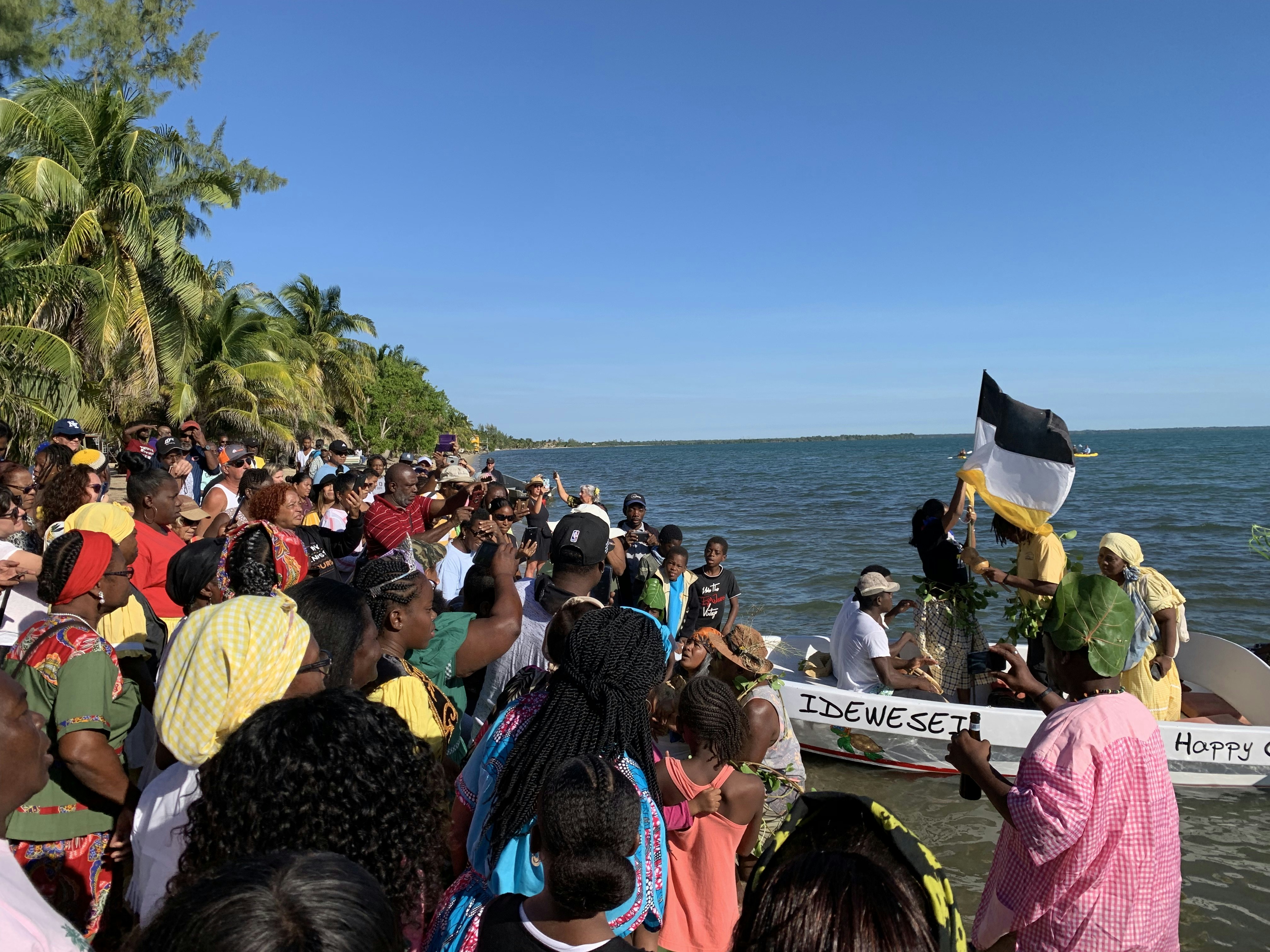
Culture
Garifuna Settlement Day
To be honest, no one knows what time the boats will arrive at Hopkins Beach, but it’s best to arrive at 6:45 in the morning anyway. Despite the early hour, you’ll find out rather quickly that the party has been going on long before you wearily stumble through the sand. The drumming, the singing and the celebrating have been raging from the night before and the festivities are only getting started.
November 19 is Garifuna Settlement Day and the small coastal village of Hopkins, located in the eastern part of the country, is filled with Garifuna from all over the country (and beyond) waiting for the traditional re-enactment to take place.
The national public holiday is a celebration of when the Garifuna, who represent about six percent of the population, first arrived in Belize from St. Vincent in the 1800s. Women line the shore singing traditional songs while swaying their hips to the rhythmic drum beats. Everyone faces the sea; waiting for the boats to arrive.
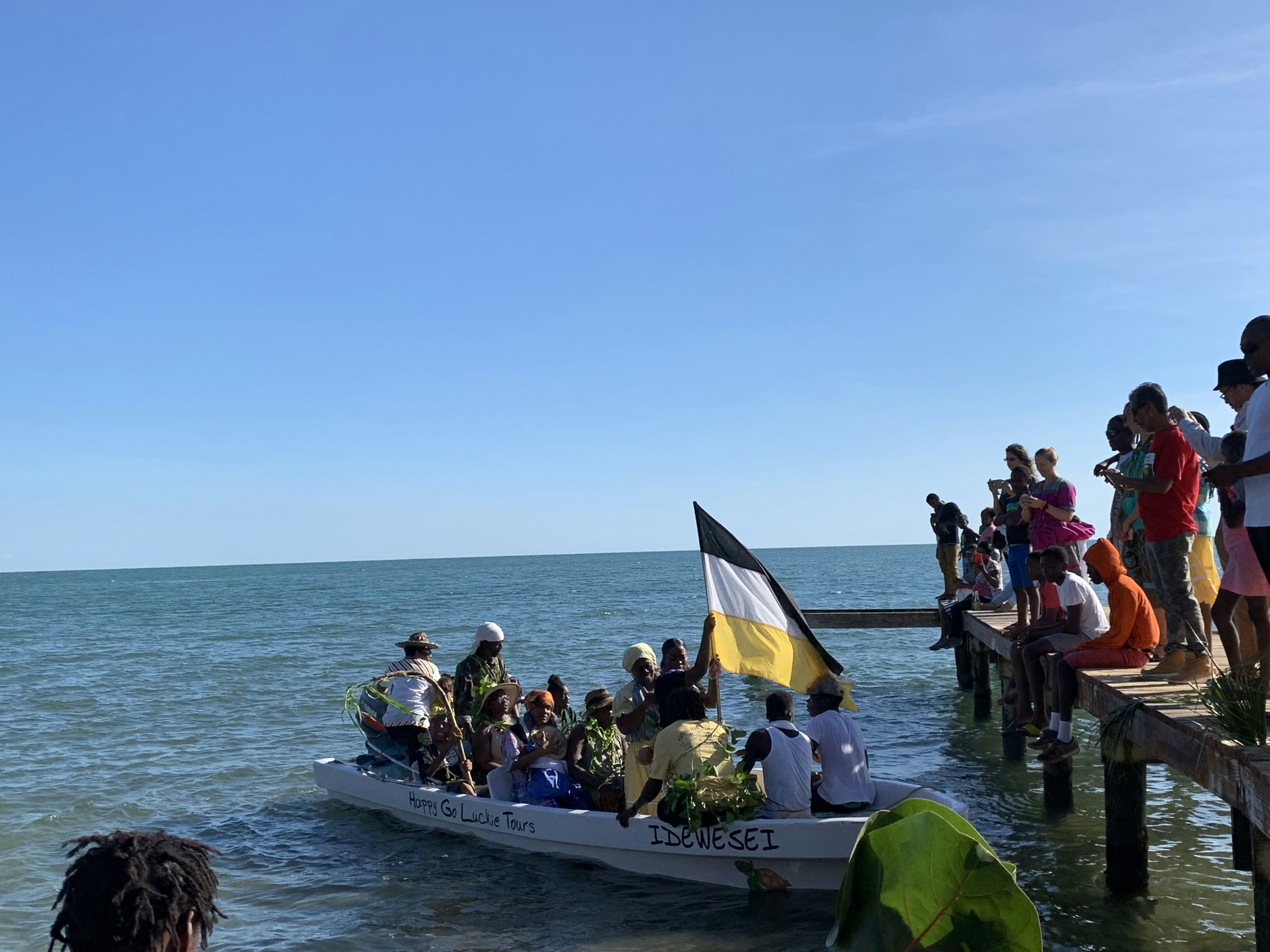
In the distance, a pair of boats, filled with “settlers” and bearing the black, white and yellow flag of the Belizean Garifuna (the flag of the Garifuna in Honduras is yellow, black and white), lurches towards the shore.
But standing in the shallow waters is a white man, reportedly a representation of English settlers, who turns the Garifuna away. The process is done three times and on the third attempt, the man relents and welcomes the Garifuna to the shore. The celebration hits its zenith as each “settler” sets foot on solid land and a joyful procession of singing and drumming heads through the town and to the local church.
Be sure to bring water, but definitely fill your belly with the extremely tasty and dense gwetu – a Garifuna porridge made with smashed green plantains, ginger, coconut and carnation milk and nutmeg.
Note: The national holiday means many businesses will be closed for that day. So plan accordingly.

Music
For the Garifuna, the drum is life. It is a direct connection to African ancestry and a point of pride for those who play it.
“Drumming is so important to the culture because drumming is a part of the culture,” says Ronald Williams, a drummer from Hopkins. “Without drumming there would be no Garifuna.”
In dying sunlight next to a beachside restaurant, a collection of musicians – a female dancer dressed in a traditional Garifuna colorful, patterned dress, two men on maracas and a trio of drummers settle in. The music is fast-paced, not frantic, a nice beat that encourages toe-tapping or for the more advanced, hip-shaking. The singing is more like a call and response over the steady rhythm and participation is highly encouraged.
Most drummers hone their craft at drumming schools which are dotted throughout various Garifuna villages in Belize. The schools are an integral part of the community where children as young as four walk through its doors and take up the instrument.
Warren Martinez, who some consider the best drummer in the country, was born within the walls of a drumming school and has been part of the community ever since.
“I like to share my culture,” says Martinez, who has traveled internationally for shows. “Whenever I die, there will be a remembrance of me … It’s my gift. I want to share.”
In Hopkins Village, visitors can learn to play at Jabbar Lambey’s Lebeha Drumming Center. Hour-long lessons are $15USD.
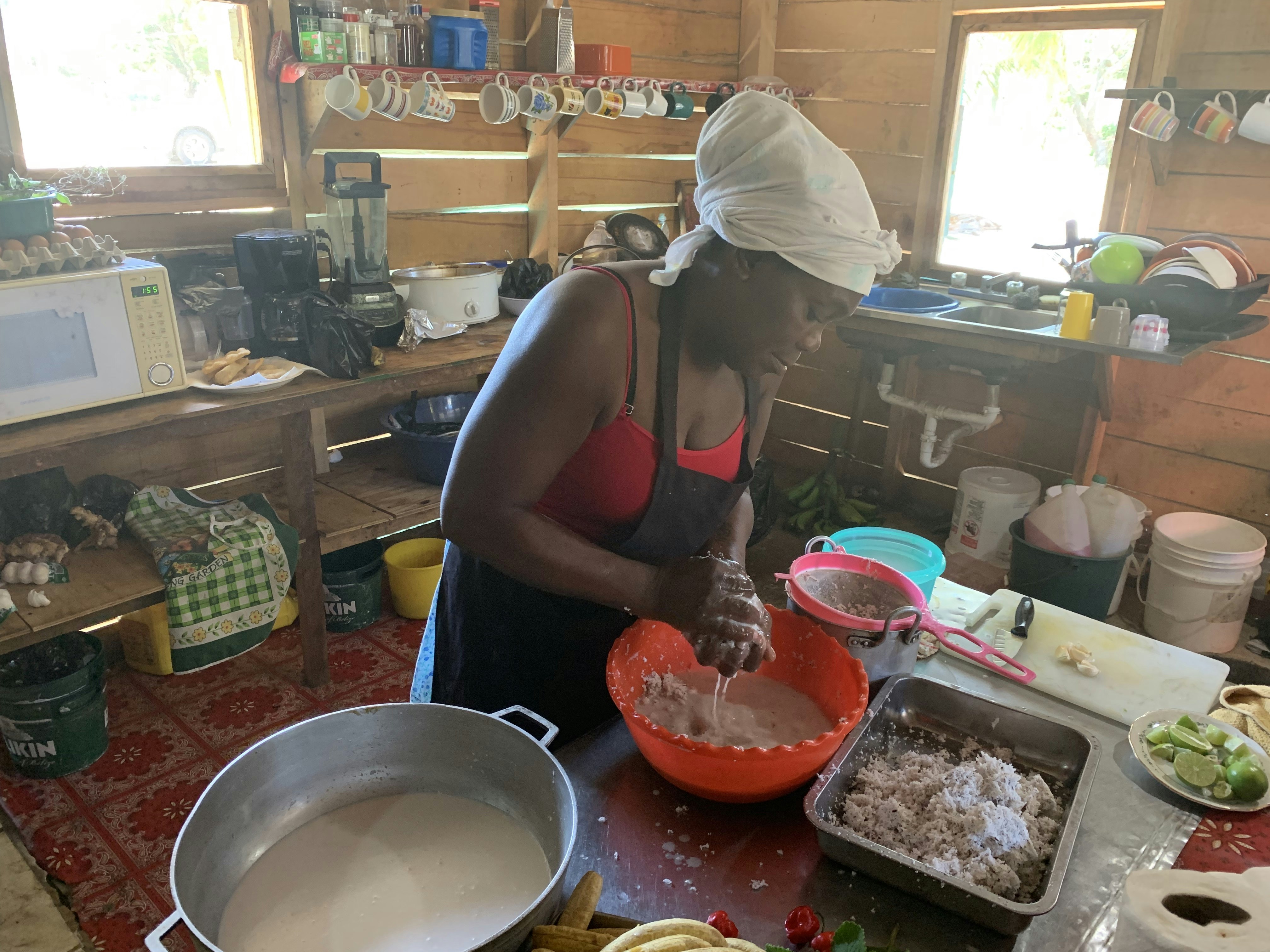
Food
Various bowls (one containing a pair of fish heads) scattered about, a large tray filled with green plantains, a white cutting board stacked with cloves of garlic waiting to be diced and a pair of burners cranked on high. It’s the kind of mayhem any foodie would recognize and adore.
Tucked a few feet away from the ocean and shaded by palm trees, Dian Martinez’s Queen Bean in Hopkins is a popular spot for truly authentic Garifuna dishes. Visitors can sample classics such as hudut, a fish and coconut stew filled with fresh herbs and spices and tikani, made with okra, cabbage, carrots and loads of seasoning and for dessert, cassava pudding.
For those looking to work for their food, J&D Tours – a small locally owned business based in Hopkins offers a full Belizean food experience that puts visitors right in the kitchen to see first-hand how these nationally beloved dishes are made. The immersive experience is $USD45 per person.
You might also like: Explore cultural tourism in Belize
Mayan influence
It’s hard to move throughout Belize without noticing the Mayan influence. Ruins dot the entire country, including the backyards of everyday Belizeans. The country was once considered the epicenter of the Mayan Empire and though numbers have dwindled, Mayan culture remains – most notably in food.
Chocolate making
Sitting at a small stool in front of a wooden table, Victoria Pop worked up a sweat. Using a volcanic rock pestle with origins from the highlands of Guatemala, she made quick work of the cacao bean shells. The crunching echoing through the open-air thatched-roof room located on her hillside home in the town of Toledo, the southernmost region of Belize.
Cacao was once so valuable to the Maya that it operated as a form of currency. Marriage dowries would be paid in it. The drink, which is filled with antioxidants, was used to help young mothers produce milk.
The process is painstaking and the ease at which Victoria breaks the pods, separates the shells from beans and later makes a creamy paste is deceptive. But the task is one that has been done for thousands of years with grinding stones being passed down from eldest daughter to eldest daughter for generations.
The end result is a piping hot cup of cacao that can be flavored with allspice that was once considered the drink of the gods.
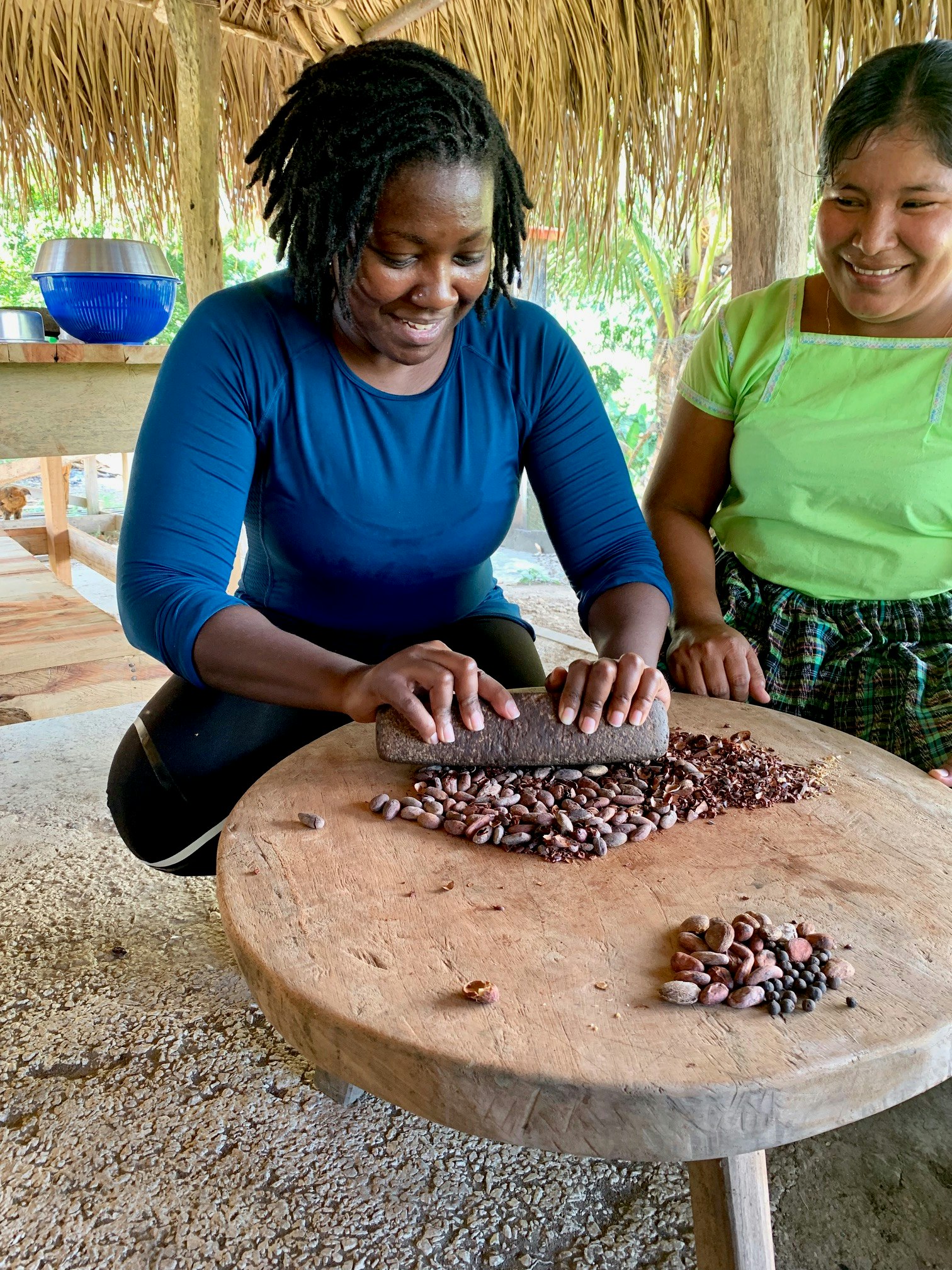
Eladio Pop’s Farm offers tours of its farm, with an emphasis on the cacao plantation and a separate chocolate-making tour that guides visitors through the entire process – “from soil to seed and from bean to bar”.
Agouti Farm, named after a brown rabbit native to the country, is headed by Eladio Pop, who begin farming at 14. He and his wife, Virginia, had 15 children, who over the years, helped the organic farm expand and eventually offer hands-on experiences for visitors.
Tours must be booked in advance via email and often include a homemade Mayan lunch. Cost is $USD50.
You might also like: Your guide to adventure activities in Belize




